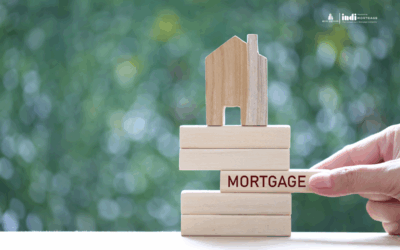Welcome To Our Mortgage Educational Blog About:
First-time homebuyer: Here’s much you need for down a payment

How much do you need to save to buy your first home? If you’re a first-time homebuyer in Canada, the minimum down payment required by your lender will be 5% of the purchase price, and most lenders require that you have at least two percent equity in your personal residence. However, every case is different.
If you’re lucky, you might already have some money saved up for your down payment.
For example, maybe you’ve been socking away cash every month over the past few years in order to save up enough money to make the down payment on your dream home.
Maybe you’ve been renting out an extra bedroom which means your roommate has been paying you back with those rental payments towards your future home.
Maybe a family member left you a nice inheritance that allowed you to save up that cash for the down payment on a new home.
Or maybe you’ve won the lottery and have come into a nice amount of cash to work with.
Whatever the case, as a first-time homebuyer, you should know that the amount of your downpayment will affect how much interest you pay over the life of your mortgage loan.
But first……What is a down payment?
A down payment is the money you pay to a seller when purchasing real estate. You make it in one or more payments, which lowers your loan amount and reduces what you have to borrow from a lender.
In the end, it depends on the price of your home. Your mortgage broker can help you figure out an affordable figure for your particular situation. However, a first-time homebuyer should expect to spend between 5% and 20% of their gross annual income on their first mortgage payment.
A down payment is NOT a deposit!
Usually, a first-time homebuyer is under the impression that a down payment is the same as a deposit. This is not true.
Let’s break it down together: A deposit is a percentage of the purchase price of the property that you put down before you agree to buy. It is lower than the downpayment, and it helps the seller see that you are serious about buying.
On the other hand, a down payment is the money you put down after you agree to purchase. This helps your lender determine your mortgage eligibility and rates.
When do you need mortgage loan insurance?
Mortgage loan insurance protects lenders against losses if you fail to make their mortgage payments. This protection, in essence, takes over when someone is unable to pay. That’s why it’s needed for those who can’t make a 20% down payment.
In most cases, they take control of and sell off any property involved to recoup some or all of their money. Mortgage loan insurance can be invaluable for a first-time homebuyer who doesn’t have enough cash at hand.
So, a higher down payment can reduce or eliminate the burden of mortgage default insurance!
A larger down payment reduces your reliance on mortgage default insurance (in other words, it reduces your risk of losing your home to foreclosure if things go south).
Mortgage default insurance is added to variable and fixed-rate mortgages with less than 20% equity. It protects lenders from losing money if you fall behind in your payments, especially if you are a first-time homebuyer. If you can put 20% or more down on your property, you can avoid paying mortgage default insurance altogether.
It comes with a monthly fee that is typically factored into monthly payments, though it does appear as an upfront charge when taking out loans under certain circumstances.
Minimum and maximum down payments!
Is there a minimum down payment?
The Federal Government mandates that all lenders in Canada cannot require a first-time homebuyer to put down more than 20% of a property’s purchase price or appraised value as their down payment.
Is there a maximum down payment?
So, a higher down payment can reduce or eliminate the burden of mortgage default insurance!
A larger down payment reduces your reliance on mortgage default insurance (in other words, it reduces your risk of losing your home to foreclosure if things go south).
However, you can buy a home outright if you want to, and your debt will be lower in the end. But, to be honest, saving a significant sum of money for a down payment is not an easy job.
How to calculate your minimum down payment
As mentioned above, your minimum required down payment in Canada starts from 5% of your purchase price. However, different cases require different down payments. as a first-time homebuyer, here’s what you need to know
1. The down payment for homes valued at $500,000 or less
You can purchase a property worth $500,000 or less with 5% down. However, the exact minimum amount will vary by province and lender. A good mortgage broker can help facilitate your search and ensure you find an option that fits your needs.
2. The down payment for homes under $1 million
A first-time homebuyer who buys a house from $500,001 to $1 million and has saved up 20% of their asking price needs to pay:
5% of the first $500,000 of the purchase price.
10% for the portion of the purchase price above $500,000
What does this mean?
If you want to buy a house that costs $800,000, here’s what calculations you have to make:
$500,000 x 5% = $25,000
$800,000 – $500,000 = $300,000 x 10%= $30,000
So, in total the down payment will be $25,000 + $30,000= $55,000.
3. The down payment for homes above $1 million
As of November 20, 2016, Canada Mortgage and Housing Corporation (CMHC) put in place new rules to increase security for government mortgage insurance.
The rule requires all borrowers to make down payments of 20% or more on homes valued above $1 million. That will depend on your situation and the lender as well.
A down payment affects the total cost of your mortgage!
We often talk about a first-time homebuyer needing to save 20% of their purchase price, but that’s just part of it. To qualify for financing, you’ll also have to put together cash reserves and additional documentation required by financial institutions.
However, according to a recent report, Canadians generally opt for high down payments. Another 2021 study shows that in British Colombia and Ontario, the down payment is more than 20%. This is explainable since the house pricing there goes above $1 million. Meanwhile, in Alberta, residents put down a 15% on average.
However, one thing is for sure: The more cash on hand when you buy your house, the less debt and stress you’ll have in your life later on. Get professional help to get the best deals!
Contact me today for help with financing options and answers to all of your questions about first time home buying within Edmonton or anywhere in Canada.
We’re happy to help!
If you need more information about the topic or any other questions about home buying mortgages, don’t hesitate to contact us.
Are you ready to apply for mortgage refinancing? Reach out to me directly or start your application here: www.sandraforscutt.ca/mortgage-application/
Recent Educational Blogs
Preparing for Renewal Season
Oct 2025 | Preparing for Renewal Season: What 2026 Borrowers Should Do NowWith nearly 60% of Canadian homeowners set to renew their mortgages by the end of 2026, preparation has never been more important. After years of ultra-low rates during the pandemic, many...
Navigating Mortgage Renewals
Sept 2025 | Navigating Mortgage RenewalsFrom Rock-Bottom Rates to Today’s RealityIf you were lucky enough to secure a mortgage in the early days of 2020, chances are your rate was impressively low, often near 1% to 2%. At the time, the Bank of Canada’s overnight rate...
How Your Credit Score Impacts Mortgage Approval
Aug 2025 | How Your Credit Score Impacts Mortgage Approval If you’re thinking about buying a home, you might be wondering how your credit score influences the process. The short answer: your credit score is one of the most important factors lenders consider when...



